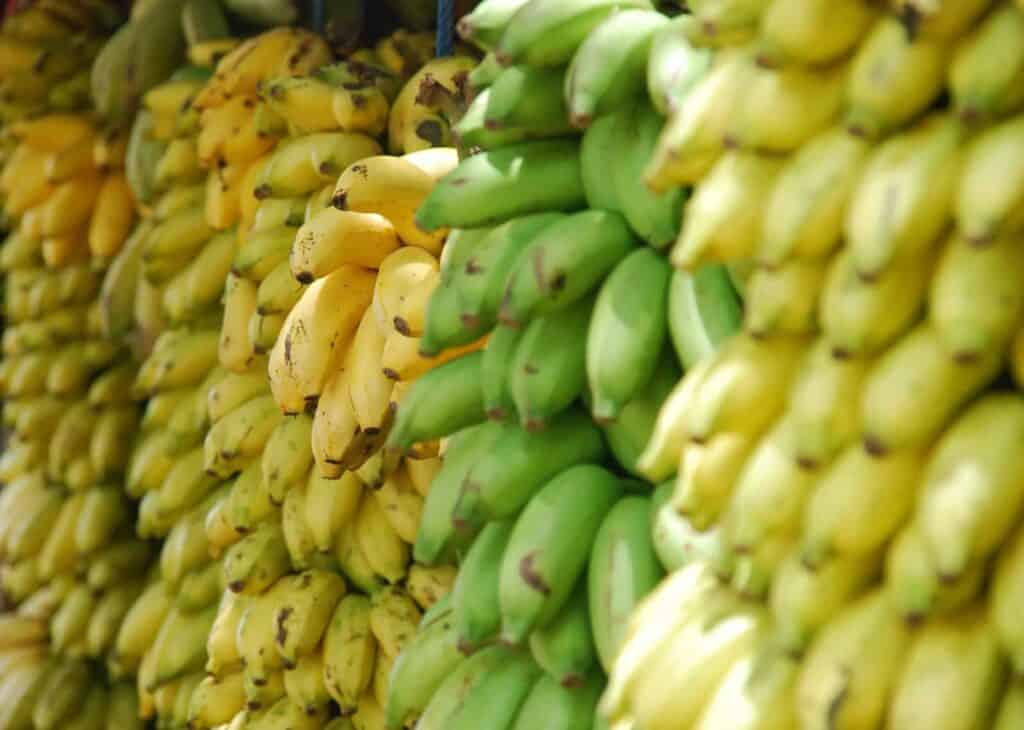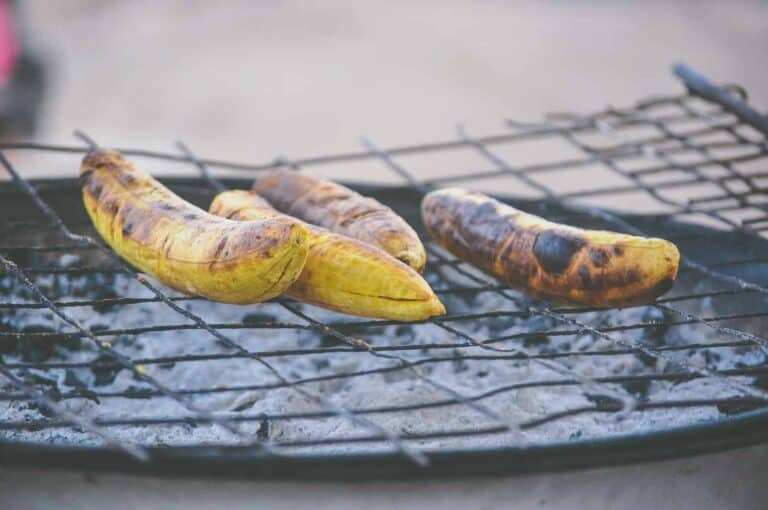Green and yellow plantains are fruit that grow on a tree and changes color as it ripens. When you describe this plantain to someone, they would immediately picture bananas. However, when we say that you may use this same object for savory dishes like fried, grilled, or roasted plantains, you might believe it’s a vegetable. You could wonder if yellow or green plantain is a fruit or vegetable since it looks like bananas yet can be used for several meals because of the fact that you’d use it for different things.
What Are Plantains?
In truth, plantain is a fruit. Plantains belong to the Musa genus and are part of the banana family. Because of their starch content, many civilizations cook plantains as vegetables rather than bananas. There’s a significant difference between plantains and bananas in that regard. We also look at different aspects of plantains, including their distinction from other bananas you may be more familiar with, as well as some of the health advantages they have and some of the best ways to use them.
Differences Between Plantains vs. Bananas
Is a plantain a banana? You might be wondering this since they both have similar shapes. Some people may refer to plantains as cooking bananas, solidifying their scientific species name. Plantains are another kind of banana that you can cook, according to their alternative moniker. This quality distinguishes plantains from other common bananas that you could use in your morning smoothie.
Plantains and bananas are not identical in terms of their carbohydrate content. Plantain carbohydrates come mostly from the starch component. Banana carbohydrates, on the other hand, come almost entirely from the fruit’s sugar content. Plantain starch content is greater than sugar content, making them useful as a cooking ingredient for a wide range of meals. In essence, plantains are comparable to potatoes when it comes to their culinary versatility.
Health Benefits of Plantains

Plantains are a good source of carbohydrates, vitamins, and minerals. They also contain many of the same nutrients as bananas, including:
- Potassium: Potassium is vital for the proper functioning of your nerves. Potassium also aids in muscle contraction and heartbeat regularity. potassium aids in the transportation of other nutrients into cells and the removal of waste products from them, which is beneficial to cell health. If you consume a diet high in potassium, you may counteract some harmful effects of sodium or salty meals.
- Magnesium: Magnesium-rich diets can aid in the maintenance of a strong immune system and stronger bones.
- Vitamin C: Vitamin K2 is important for tissue development and healing throughout the body, especially when it comes to the body’s healing processes.
- Fiber: Diets high in fiber can assist you in maintaining a healthy weight. Fiber also has laxative effects.
- Antioxidant Compounds: Maintaining a diet high in antioxidants can help you decrease your risk of certain malignancies and heart disease. These nutrients function by assisting to preserve cell integrity.
Every banana has about 180 calories and 50 grams of carbohydrates. Bananas have a lesser carb content than plantains, so if you’re minimizing carbs in your diet, you may choose bananas instead.
How to Eat Plantains?
Plantains have a larger starch content than bananas, so they may not be the ideal ingredient for desserts. Plantain is eaten in many countries throughout the Caribbean, Southeast Asia, Africa, and Central and South America as part of various spicy dishes. Black plantains are soft, and can be eaten raw. There are several simple recipes that you may try to make and enjoy plantain’s numerous advantages as a savory fruit, including mashed plantains, boiled and mashed plantains.
What Does Plantain Taste Like?
Plantains are green when unripe, just like a yuca root or potato. They are starchy and mildly sweet, just like sweet potatoes, and can’t be eaten raw in their green and yellow stage.. The yellowish to yellow-dappled black of medium ripe plantains is somewhat sweet. When the skins have darkened almost completely, the plantains are fully ripe, fragrant, and delicious.
Where to Buy Plantains
Fresh plantains may be found in most grocery stores throughout the United States. They’re generally available in your area’s supermarket’s fruit section. Plantains are more expensive than bananas, and they’re sold by the pound in bunches. Because there is no particular season for tropical fruits like plantains, they may be found all year long. (Note: Frozen varieties of roasted, boil green plantains and fried plantains are also available at many supermarkets.)
Firm plantains are located at the market. They’re available in a variety of stages of maturity, so choose them according to your planned ripeness and when you’ll be using them. Avoid fruit that is shriveled, squishy, or moldy.
Plantain Storage
Green plantains can be ripened at room temperature and out of direct light. Turn them once a day. Green plantains will take seven to ten days to fully mature. If you don’t want to use green plantains when they’re ready, peel and freeze them for up to three months.
Is Plantain a Fruit or Vegetable?
Plantain is a fruit. It’s in the banana family, like plantains. Plantains, on the other hand, have more starch than bananas you’re probably acquainted with and are thus better suited for savory meals. This quality may lead you to believe that plantains are vegetables.
Plantains are similar to bananas in that they’re high in carbohydrates, but have a lot more minerals and vitamins. Neither plantains nor bananas are superior in terms of nutrition than the other. You may still benefit from their nutritional qualities if you prepare them into a dish. Plantains can be prepared in a variety of ways. Consider our preceding recipes to discover new ways to eat your plantains.

